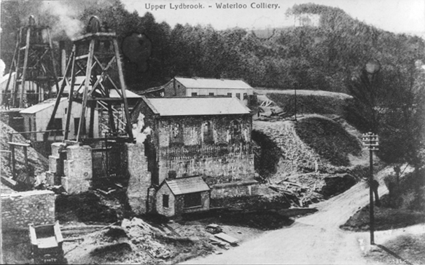Not much is known about the Forest of Dean before the middle ages although there are some artefacts still in existence such as fossils from the prehistoric period, Mesolithic monuments, evidence of Bronze Age settlements, and tools from the early Roman farmers who settled here.
The Forest of Dean started to come to prominence during the middle ages when it became a royal hunting forest and was tasked with supplying the kitchens in the royal courts.
The Forest of Dean Verderers
During this time, the forest was protected by Verderers who administered Forest Law on behalf of the king. In 1682 The Speech House Hotel was built as a hunting lodge and home to the Verderers Court for them to host the Court of Mine Law and Court of the Speech.
In keeping with tradition, there are only four Verderers who are chosen to serve and once they have been elected, they serve for life unless removed by the sovereign due to incapacity or lack of qualification. To qualify to become a Verderer a person must own land within or near the Forest, have good health and be free from other engrossing duties.
There are still Verderers to this day and their role is to discuss the issues of relevance to the woodlands and deer within the Statutory Forest of Dean; to advise the Deputy Surveyor on topical issues relating to the Forest and to oversee the grazing of sheep.
The current Forest of Dean Verderers are Mr R. W. Jenkins (elected 1992), Mr M Bent (elected 2009), Mr I. J. Standing (elected 2011) and Mr R. G. Daniels (elected 2017).
Freemining
The Forest of Dean has been a mining area since at least 1244 and the rights of the Freeminers were granted by King Edward however it is unclear which King Edward granted these rights. The main commodities mined within the Forest are coal, iron ore and, to a lesser extent, stone.
Freeminer was the title that was given to the iron and coal miners in the Forest if they:
- Are born in and live within the Hundred of St Briavels
- Are over the age of 21
- Have worked for a year and a day in a mine within the Hundred
The Hundred of St Briavels consists of the statutory Forest of Dean and each parish touching the Forest boundary. You can read more about the Statutory Forest, or Forest of Dean proper as it’s locally known, in our FAQ blog.
The Freeminer’s Mine Law Court was held at Speech House and all Freeminers follow the Book of Dennis which is the colloquial name for The Dean Miners’ Laws and Privileges. The earliest example of these rights and privileges is from 1610 however this is a transcript of an earlier version. At some stage during the 19thCentury, the rights and privileges began to be referred to as the Book of Dennis, but nobody knows why.
The Freemining tradition in the Forest is so unique that during the nationalisation of the coal mines, the mines in the Forest of Dean were exempt. You can visit an example of a Free Mine at The Dean Heritage Centre.
The Industrial Revolution
The Wye Valley is seen as the birthplace of the Industrial Revolution as it was the perfect location to produce iron because the ore could be mined in the area and the coal and wood required for smelting were also freely available. In addition to the natural resources, the River Wye and the River Severn meant that the iron that was produced could easily be transported.
This rise in industry led rise to the development of the railways in the area, a small portion of which has been preserved as The Dean Forest Railway. Often when you are out and about exploring the woodland, you will come across signs of the old railway lines that used to crisscross all over the area allowing the many items produced to be transported out of the valley.
Another major claim to fame in the birth of the Industrial Revolution is the production of brass. Tintern was the first place in Britain to produce brass in 1566, this then led on to other industries such as wire making, and in later years, paper milling, copper production, tinplate production and lime production.
During the First World War or The Great War, of 1914-1918, most of the cable used in the telegraph wires on the Western Front was produced here in the Forest of Dean at Lydbrook.
The Birthplace of Tourism
In 1770 William Gilpin visited the area and took a boat tour along the River Wye. He then went on to write Observations on the River Wye. This publication proved to be extremely popular and led to the first ‘package holidays’ where visitors followed the routes laid out in the book. Observations on the River Wye contained itineraries for tourists to follow and even suggested where they should dine along the route.
The Napoleonic War meant that where people had previously taken great tours around Europe, they now took tours around the Wye Valley due to the popularity of Gilpin’s guidebook. The opening of the Wye Valley Railway led to even greater numbers flocking to the area and tourism was born!
To this day tourism is still going strong in the Forest of Dean and Wye Valley and you can now book your stay with us for our planned reopening on May 17th. Click here to book.

